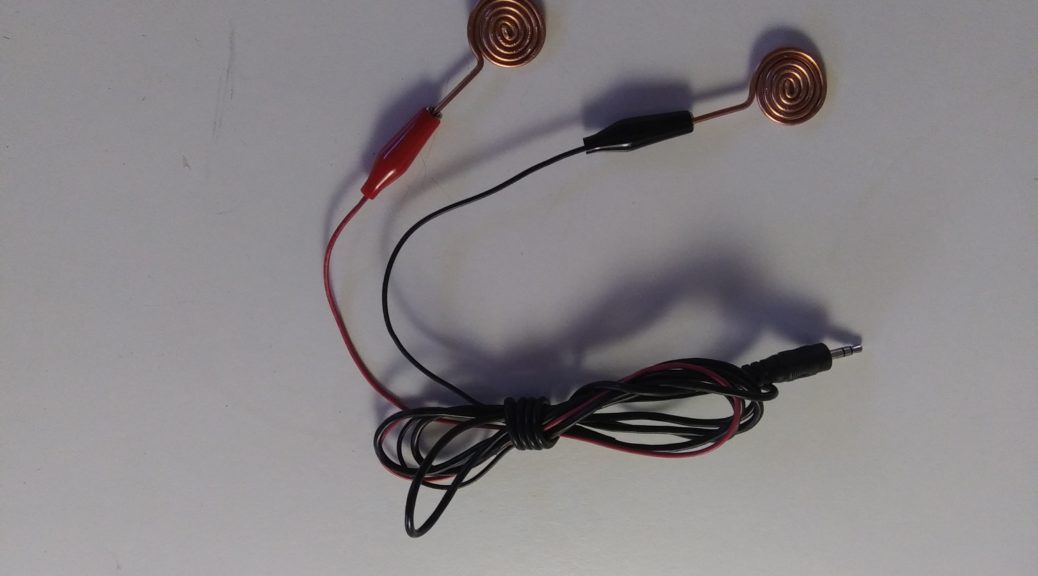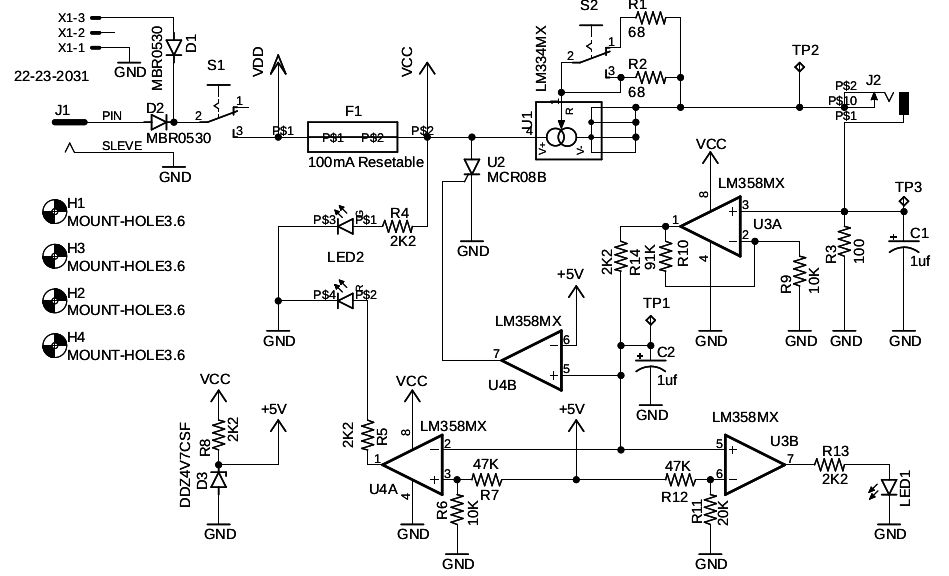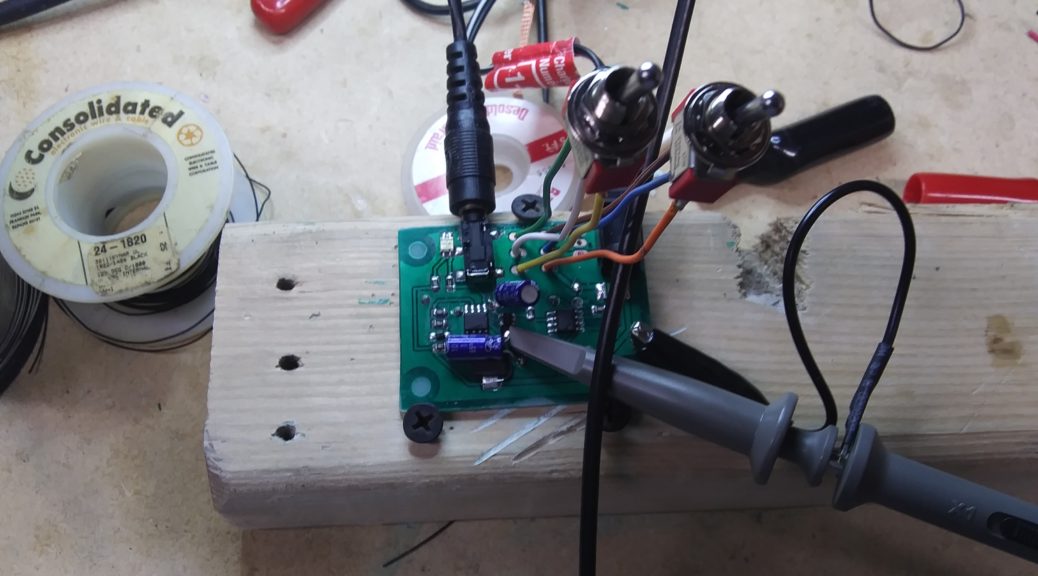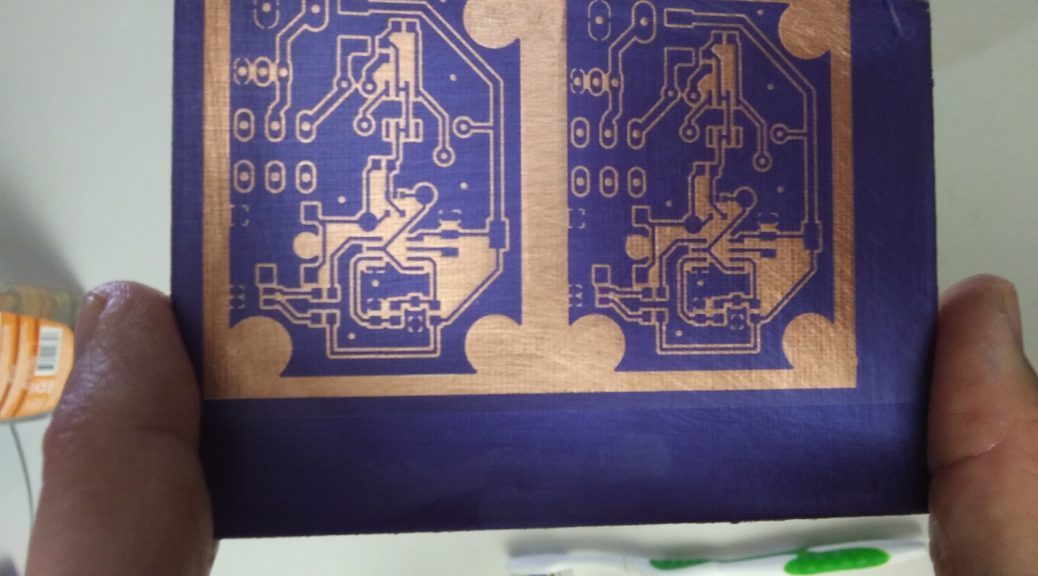
I’ve finished the updated design for my TDCS controller, but I’m waiting for a few parts that I didn’t have on-hand and couldn’t strip off of the board that represented my first attempt. Rather than just sit around and wait, I decided to figure out how to make a decent set of electrodes without ordering stuff online.
I used a standard 3.2mm mono-jack to connect the leads, and had intended to build my own cables. However, I don’t have any wire around the house that is suitable for this use. All of it is either way to heavy a … Read the rest

An unfortunate outcome of many first attempts is the learning that goes along with failure. My initial design for a TDCS controller had some weaknesses (okay… outright failures). At first, I attempted to fix them on-board by cutting traces and soldering wires to re-route power, or by dead-bugging extra components onto it. However, you can only do so much without having to shift gears and start over. This post is all about the redesign.
The driving force behind the re-design was my inability to make the TSC888 current sensing amplifier work like I wanted. However, I can accomplish the same … Read the rest

In previous posts, I described the process I went through to design and fabricate a circuit designed to safely apply 1mA of current to any load (including potentially a human). Up to this point, things had gone well. The TSC888 amplifier intended to measure the actual current flowing turned out to be a little small for hand-soldering, but my practiced and patient hands managed it okay. I wouldn’t recommend it to someone who is just starting out with surface mount components though.
With the board built, I plugged in a 9V wall-wart transformer, connected a 1K resistor to substitute as … Read the rest

In the previous post, I described a circuit design for a TDCS controller I’m developing. Because I’m working almost exclusively with surface mount components, I can’t really breadboard the circuit. The best option I have is to build a circuit board and use that for testing. Conceptually, I could send the board out to a fab shop and have them produce one. However, doing a 1-off build, especially when the design hasn’t been proven, is expensive, risky, and takes a while. Because I’m impatient and like to do things myself, I make my own. In this post, I’ll describe … Read the rest

NOTE: This was an initial design, that evolved as I built and tested it. For the final design, complete with a description of each major component, see this post.
The fundamental building block for any TDCS controller is a current source capable of supplying between one and two milliamps of current through the human body. This can be a bit of a challenge because the resistance of the body varies with electrode placement, skin resistance (which can vary from one second to the next), body composition, and a bunch of other factors. The trick is to build a regulated … Read the rest
CAVEAT: The design described here has fatal flaws. I’ve since re-designed it, and have left this here as a way to document the process and share the realities associated with designing even relatively simple things with whoever might read it. The current design is available here.
I don’t seem to be able to function well without some kind of project. Usually I have several waiting patiently for my attention. However, at the moment all my current ones require either time, money, or energy I just can’t afford to give. I have a coding project to finish the user interface for … Read the rest
Peter's Prose, Poetry, and Random Ramblings




